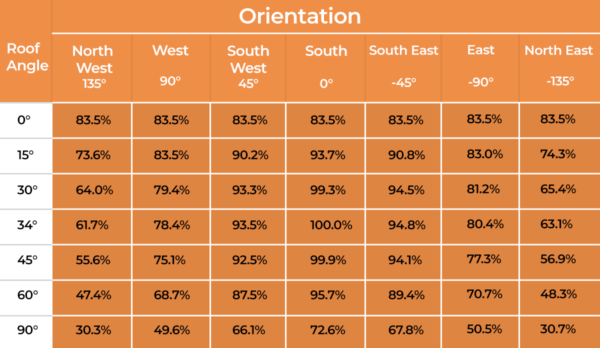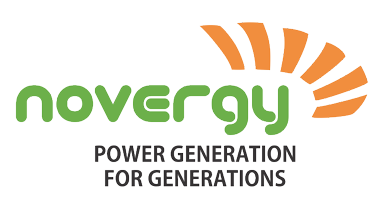We realize that as a solar investor, you are required to invest a substantial portion of time trying to find the right provider of solar panels. Nowadays, the market is flooded with vendors, which make the competition cut-throat. Due to that, the price of panels is drastically reducing, which will enhance their affordability and expedite the adoption rate. But can you scale the efficiency of a panel by its price? Let’s walk you through the facets that you must consider while selecting a panel for your property!
Owing to the parameters like positioning, orientation, climate, cell technology, panel type, raw materials, inverter – solar panels transform up to 15-22% of the daylight into useful energy. The heat from the sun that solar systems can convert into electricity is referred to as “efficiency” and the total harvest identifies the performance of the solar.
This is usually executed by compiling the electric energy yielded by the exposure of solar cells to the sunlight (photovoltaic effect), and by transmitting it via the wiring and bus bars to alter it into AC (alternative current) power. The AC power is then sent to the main panel and circulated across the entire building.
Oftentimes, panels are trialled at Standard Test Conditions (STC) to ascertain their usability. STC establishes a reflectance of 1000 W / m2 as well as a temperature of 25 °C. It is a parallel situation of a sunny day with the incident light on a sun-facing 37° tilted edge. Under such experimental conditions, the output of a solar panel efficiency of 20% with 1 m2 area would generate 200 watts.
In addition to these testing protocols, the efficiency of numerous panels is examined under extreme conditions and with stern parameters. However, it should be noted by investors that the efficiency of solar cells is not the same as the efficiency of solar systems. At times, it can be twice the efficiency of a solar panel.
Now that we have understood in detail the kinds of testing panels undergo and how efficiency is measured. Let’s find out the factors that majorly influence their efficiency;
- Components used in the manufacturing process
Let’s give you a quick run-down on the solar panels available in the marketplace. There are three types of panels (monocrystalline, polycrystalline and thin-layer) that are widely installed by EPC providers, depending on the kind of solar system an investor prefers. We have discussed in length about solar systems (on-grid, off-grid and hybrid) in our previous blogs.
Monocrystalline panels
Here, the purest form of silicon is used to cultivate monocrystalline solar panels. A long rod tube is created with a silicon-type crystal in a sophisticated procedure. The tube is subsequently trimmed into a silicon wafer to produce photovoltaic cells. These panels are renowned to provide optimum performance if compared to the other two kinds of solar panels under normal operating circumstances. The cell efficiency of these panels is greater than 24%.

Polycrystalline panels
Polycrystalline panels are comparatively less effective than monocrystalline panels because of their unique manufacturing process. Here, the silicon is not produced as a singular rod, but multiple crystals of silicon are melted together. Those same crystals are then split into wafers for each solar cell. The average efficiency of polycrystalline solar panels is 15-22%. It can be identified by its rectangular trim and blue spindled colour.

Thin-film solar panels
These panels can be developed with coverage of glass substrate, plastic/ metal and multiple layers of photovoltaic components. Typically, thin-film solar panels are versatile and lightweight. They are known to deteriorate marginally more swiftly than their aforementioned counterparts. The manufacturing process of such panels is less detailed and their performance is more than 5% lesser than the monocrystalline panels

- Reflectance efficiency
The reflectance efficacy is measured by the volume of sun rays that are reflected back rather than being absorbed and used. The low reflectance in cells and glass indicate that the efficiency of the solar panel will be unaffected. However, to mitigate such losses, EPC players now employ anti-reflective coatings (ARC) on the panel.
- Orientation and location
Investors should not disregard the strength of panels’ positioning and inclination, in order to maximize the energy generation from the solar panels. The inclination of the PV frames is extremely essential because once the sun is directly perpendicular to them, your frames create the highest energy output.

For instance, the sun is relatively low to the surface throughout the cold season in the Northern Hemisphere. In such a scenario, a sharp angle of 60° would be ideal for the solar system to achieve an outstanding harvest. The perfect angle is 45° throughout spring, and it is appropriate to get a moderate angle of 20° all through summer as sunlight is strong and high in the sky. Your EPC players can assist you to get the most of your installation by deploying your panels with brackets.
- Roof feasibility
When assessing photovoltaic panels for your building, take into account if the roof is sturdy enough to withstand the solar system’s load. For instance, if you install a 3kW system on a roof, it will usually have 12 panels of 250W and add more than 210 kg of weight.

Presently, most building components can handle PV solar arrays, it can only be too fragile on the shingle and wooden rooftops. Furthermore, contemplate whether your roof area is big enough to accommodate all solar panels. Such installations generally require an area of at least 30 cm around the solar arrays, therefore you should consider how vast a roof is at your disposal.
Size of the panel and maintenance
Nowadays, there are a multitude of solar panels available on the market with 36,60,72 and 144 cells. Monocrystalline and twin-cell installations require fewer panels to generate electricity for the building as compared to polycrystalline. Further, the investor needs to maintain the solar system regularly to increase the lifespan of the system and to reap consistent energy output.

Environmental factors
Seasons have a remarkable impact on solar efficiency. To ensure that your panel is technically very sound – the panel should hold out against the various environmental factors – snow, wind, rain, outcast, hailstorm, chemical residue, UV degradation, humidity and so forth.
If the surface of the solar cells absorbs at least 20 mm of rainfall, it can result in the chemical build-up and decrease the efficiency by 0.2%. Similarly, the accumulation of snow on the solar cell surface could adversely affect efficiency by 25-100%. With that, UV degradation can help in the formation of boron oxide that can hamper the performance by 1-3%. Inadequate insulation resistance can cause current leakage that can manipulate overall energy yield.
Ride the technology wave with Novergy
Novergy is a pioneer in the industry with notable 14+ years of experience and is home to revolutionary global solar technology with a visionary approach. It has an impressive track record of timely project installations with panels that have unmatched performance effectiveness.
We also have expertise in twin peak/twin cell technology, which is a sophisticated version of monocrystalline PERC. It is available in 450W and ensures 21% efficiency. With this technology, you can harvest more solar energy with limited surface area and fewer panels. It features a multi-busbar design that guarantees higher reliability and lowers internal resistance loss. It mitigates the chances of micro-cracks, has relatively better shading tolerance and can withstand heavy snow loads.
We make your migration to solar energy quick, easy and effective. Our products are prepared with high-quality raw materials under stringent manufacturing standards to ensure complete peace of mind to our investors.
Our products consistently deliver reliable power (up to 60% or higher) for an extended period with reasonably lower degradation. They have anti-reflective coatings (ARC) on the front glass to help absorb more solar radiation and a waterproof/dustproof IP67 junction box behind the panel. The junction box has integrated bypass diodes to reduce the effect of shading or dust.
Our solar panels have strong mechanical strength and are certified to withstand high wind loads and snow loads while being extremely responsive in low light conditions, capturing more sunlight in the outcast, ensuring better power generation. The solar panel has the lowest temperature coefficient, hence ensuring better energy output in tropical and high-temperature conditions.
To know more about the vast range of solar panels, inverters, systems and more, visit Novergy now!

